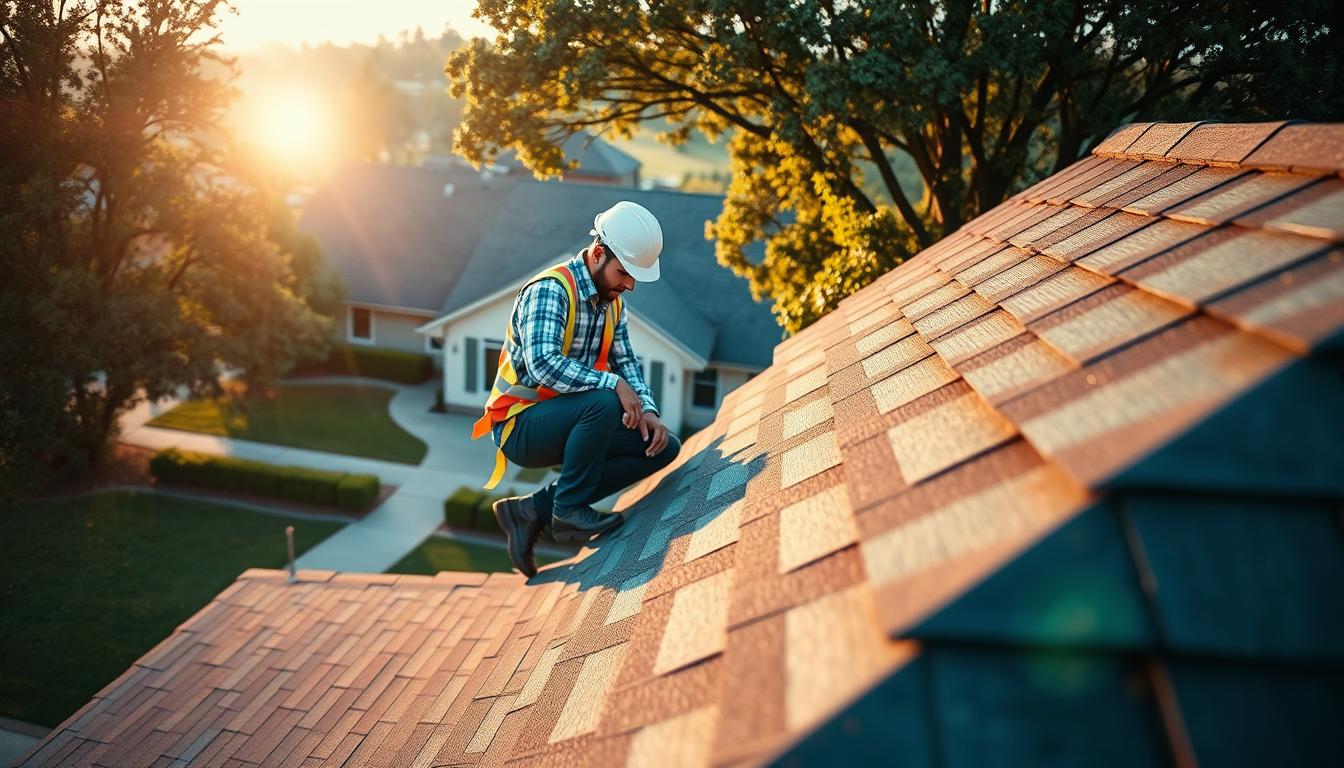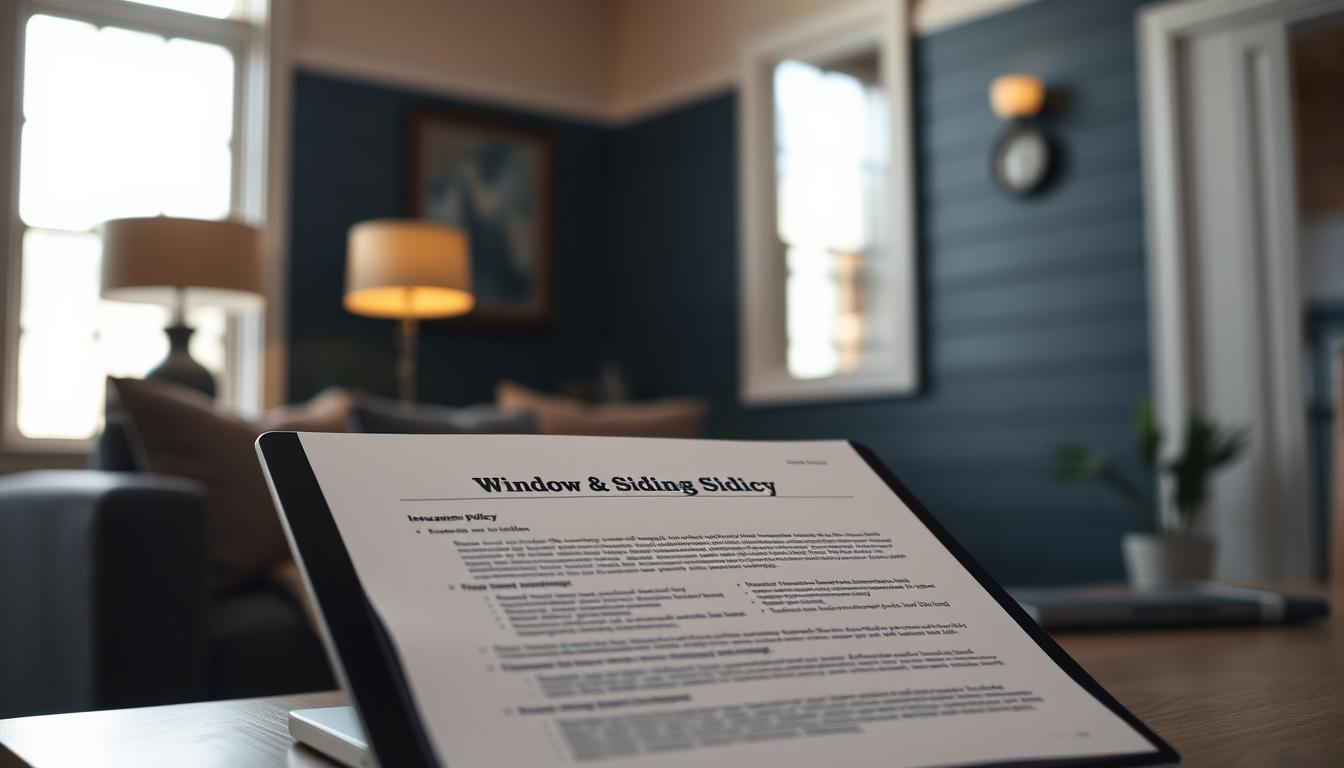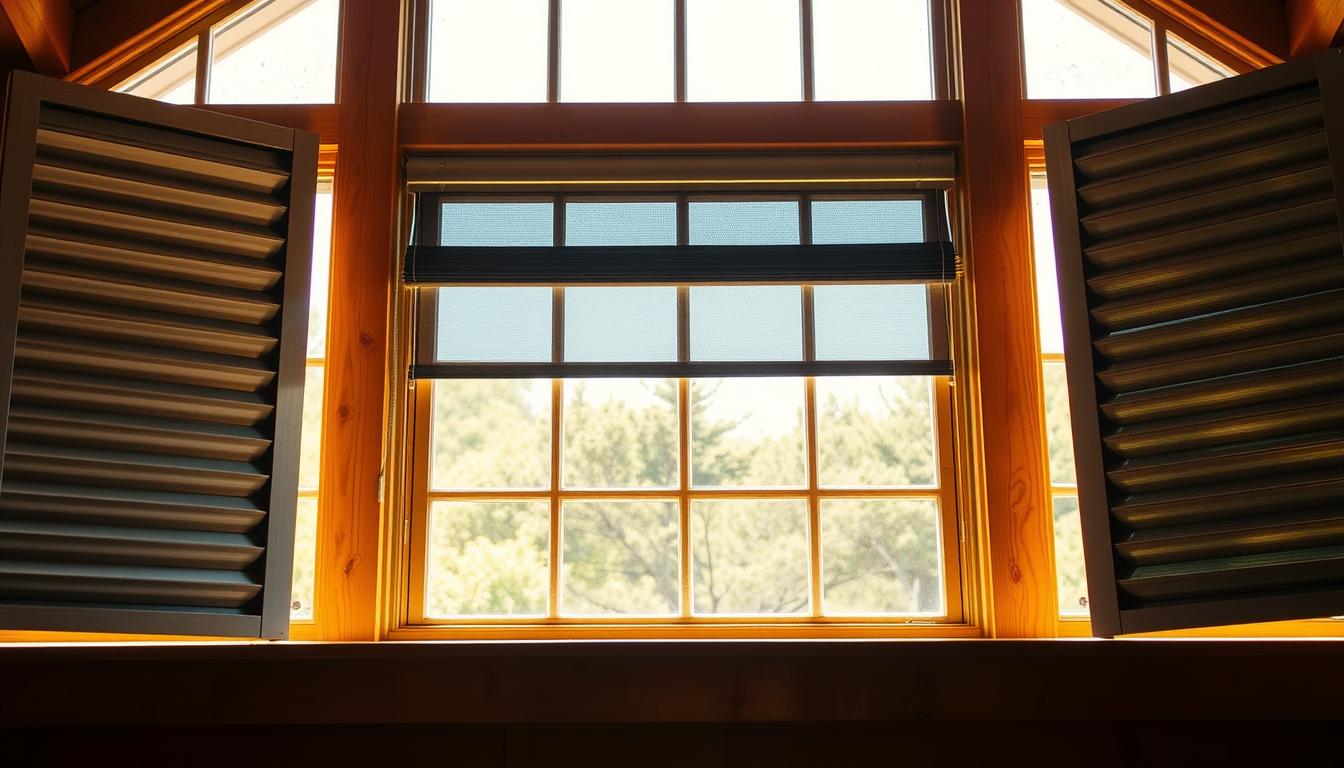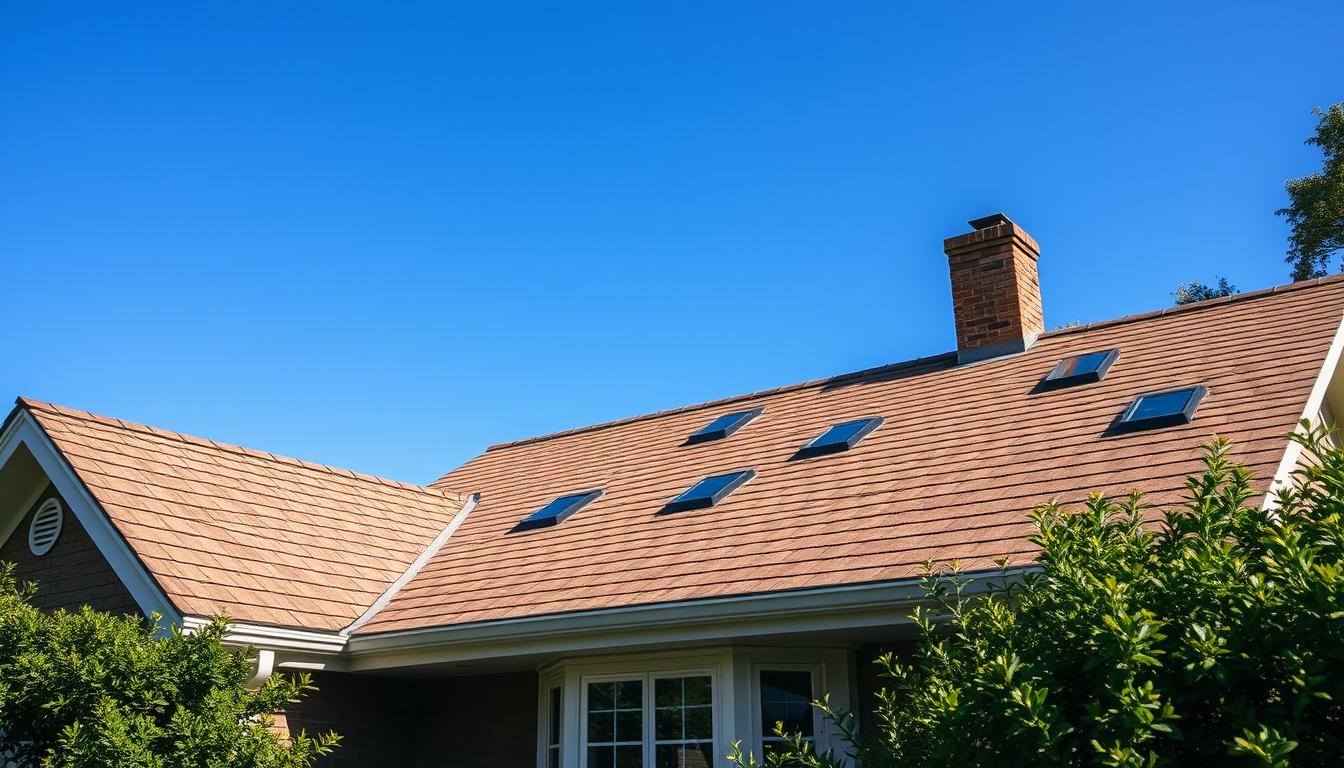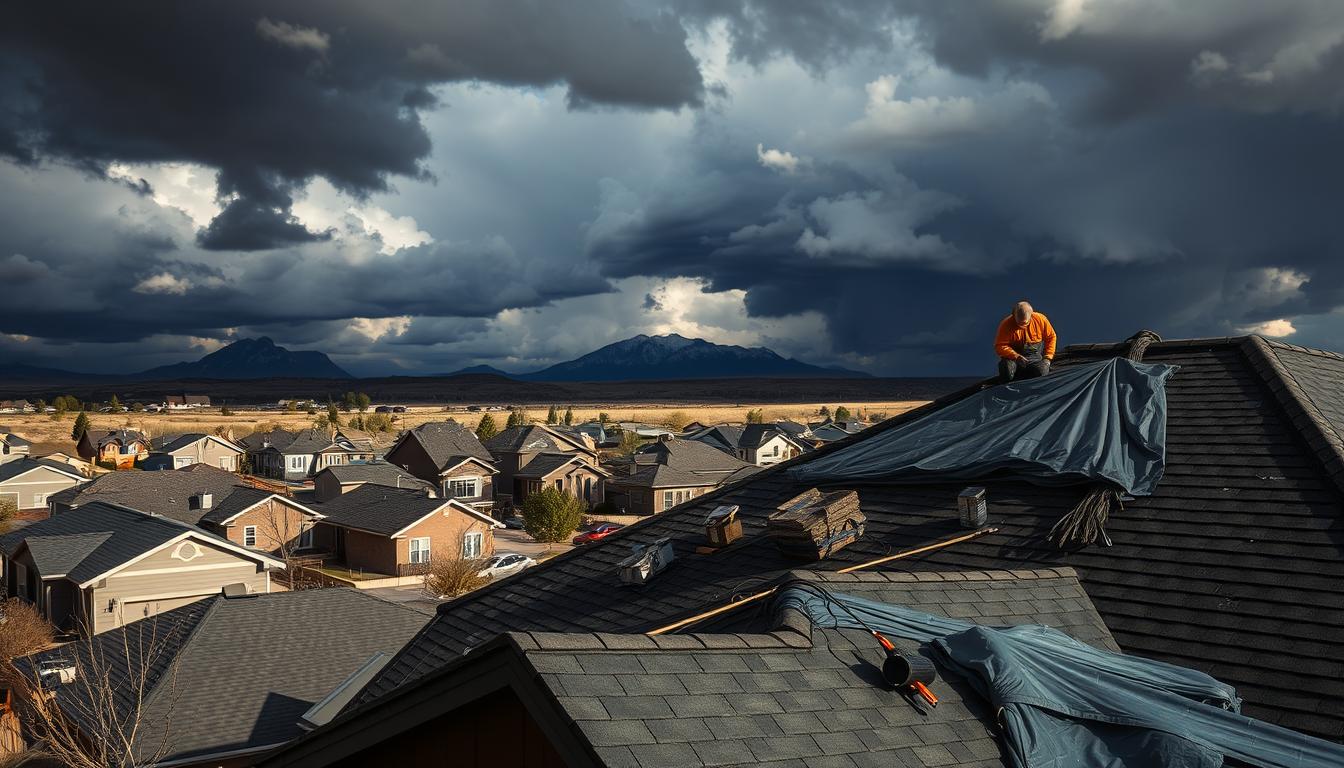Wildfires are a growing threat in the United States. They have made fire-resistant roofing a must-have for home protection. The Rich Co Inc, in Colorado Springs, offers fireproof roof materials to keep homes safe.
Choosing the right fire-resistant roofing is more than just looks. It’s about keeping your home safe. Today’s roofing technologies can lower fire risks and give you peace of mind during wildfire seasons.
New fireproof roof materials are a strong defense for homes. They protect against heat, embers, and damage from wildfires.
Key Takeaways
- Fire-resistant roofing is crucial for home protection in wildfire-prone regions
- Advanced materials can significantly reduce fire spread risks
- Professional installation increases overall roof fire resistance
- Different roofing materials offer varying levels of fire protection
- Regular maintenance enhances the effectiveness of fire-resistant roofs
Understanding the Importance of Fire-Resistant Roofing
Choosing the right fire-rated roofing is key to protecting your home from wildfires. With wildfires on the rise in the U.S., fire-safe roofs are more important than ever. This is especially true for homes in areas prone to wildfires.
The Growing Wildfire Threat
Wildfires have been causing a lot of damage to homes. In 2018, over 58,000 fires burned nine million acres of land. This destroyed thousands of homes and buildings. It shows how important fire-resistant roofing is.
Building Codes and Wildland-Urban Interface Requirements
Many places have strict building codes to fight wildfires. Fire-safe roofs are a must in Wildland-Urban Interface (WUI) areas. These are places where homes meet wilderness.
- Roof edges must resist flame contact
- Materials should prevent flames from entering attic spaces
- Proper installation is crucial for maximum protection
Benefits of Fire-Resistant Materials
Choosing the best fire-rated roofing has many benefits:
- Enhanced home safety
- Potential insurance premium reductions
- Long-term property protection
- Increased property value
Roofing experts suggest using materials like metal, clay tiles, or treated asphalt shingles. These can handle high temperatures and stop fires from spreading fast.
Popular Fire-Resistant Roofing Materials
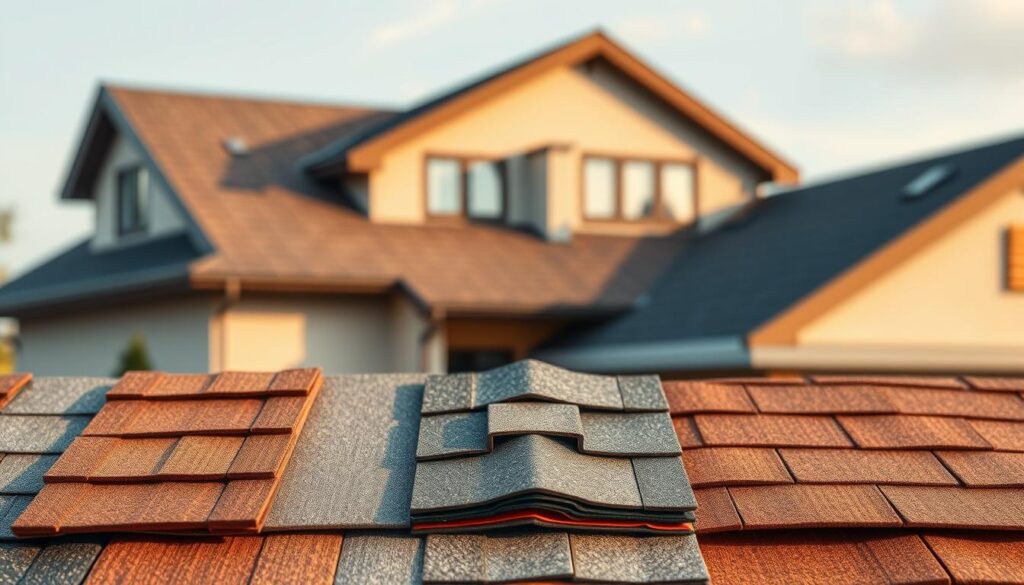
Choosing the right roofing materials is key to protecting your home from wildfires. Top flame-resistant roofing options offer crucial defense against fire risks. Knowing the different fire-resistant materials helps you make a smart choice for your home’s safety.
Several top-notch fire-resistant roofing materials are available:
- Metal Roofing: It’s lightweight and comes in various alloys. Metal roofing is highly fire-resistant. It can last 40-70 years and often gets a Class A fire-resistance rating.
- Fiberglass Asphalt Shingles: These shingles can withstand flames for up to two hours before catching fire. Most asphalt shingles are now Class A rated, offering great protection.
- Clay and Concrete Tiles: These natural, non-combustible materials have been used for centuries in fire-prone areas. They offer top-notch fire resistance but are more expensive to install.
- Synthetic Composite Shingles: These eco-friendly options, like polyurethane-based shingles, are cost-effective and durable, providing fire protection.
Homeowners should look for materials with Class A fire ratings. These materials pass tough tests, including flame exposure and burning tests. This ensures they offer the highest level of fire resistance.
When picking fire-resistant roofing, think about more than just fire protection. Consider durability, looks, and local building codes. Talking to roofing experts can help you find the best fire-retardant roof shingles for your home.
Class A Fire Rating: What You Need to Know
Keeping your home safe from fire damage begins with knowing about fire ratings for roofs. Durable, fire-resistant roofs are key in protecting your property from wildfires.
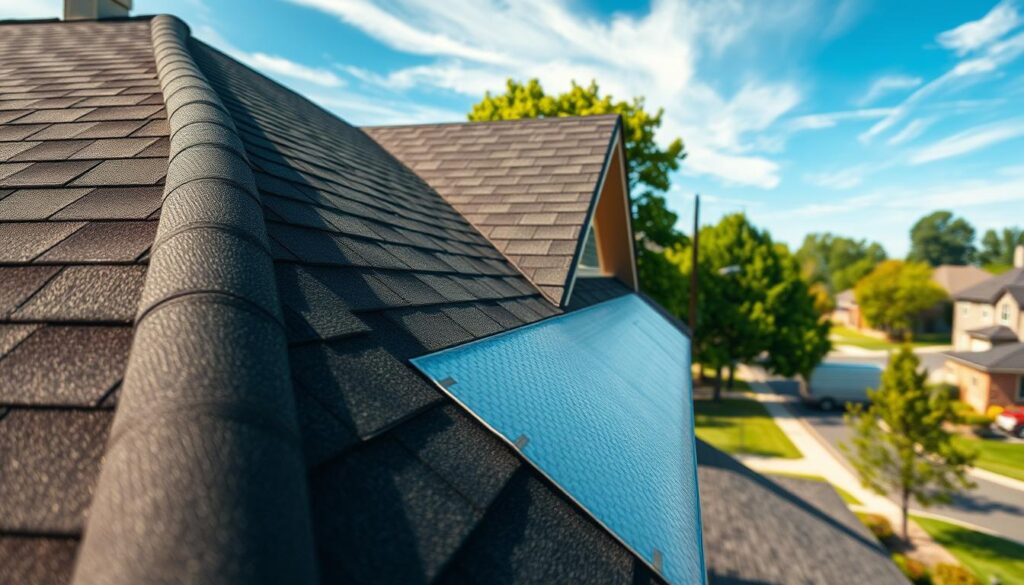
In 2022, nearly 69,000 wildfires burned over 7.5 million acres in the U.S. These numbers show how crucial it is to pick fire-tested roof products for the best protection.
Understanding Fire Rating Classifications
Fire ratings fall into three main classes, each showing how well a material resists fire:
- Class A: Highest fire resistance (flame spread index 0-25)
- Class B: Moderate fire resistance (flame spread index 26-75)
- Class C: Limited fire resistance (flame spread index 76-200)
Testing and Certification Process
Roofing materials go through tough tests to get their fire rating. The American Society for Testing and Materials (ASTM) sets standards for fire performance:
- Intermittent Flame Test: 15 cycles of 2-minute flame exposure
- Spread of Flame Test: 10 consecutive minutes of flame and air current
- Burning Brand Test: 90-minute monitoring for fire penetration
Importance of Proper Installation
Getting a Class A fire rating needs the right materials and expert installation. Roofing pros make sure fire-resistant materials are installed right to stop fire spread.
Professional installers help homeowners choose and set up the best fire-resistant roofing. This gives homeowners peace of mind in wildfire-prone areas.
Fire-Resistant Roofing Options for Different Budgets
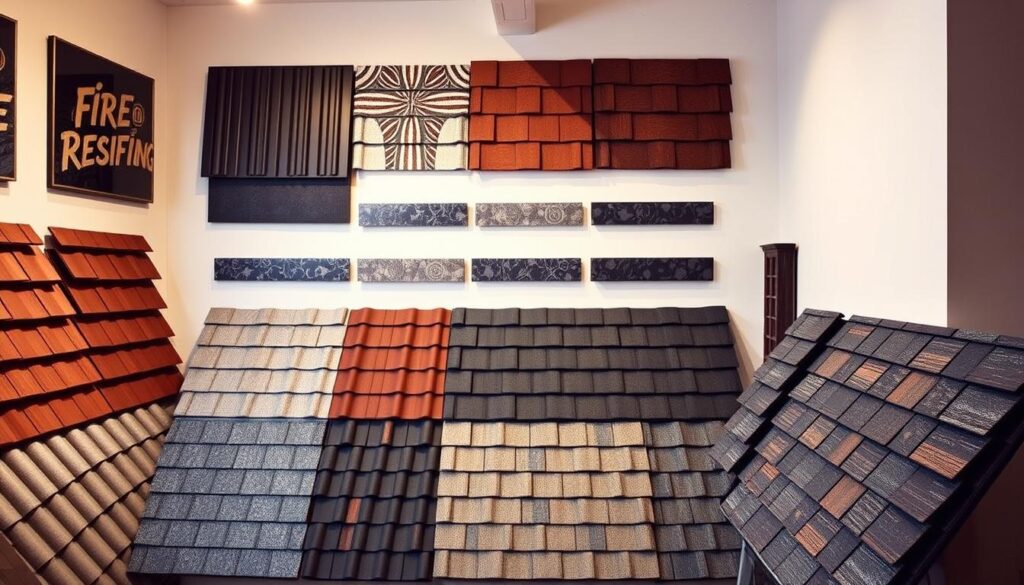
Keeping your home safe from wildfires doesn’t have to cost a lot. There are many fire-resistant roofing options for all budgets. This means you can find the right protection for your home without spending too much.
For those on a tight budget, there are still great fire-resistant roofing choices. Class A asphalt shingles are a top pick for affordable fireproofing. They can resist fire for up to two hours and work well with fire-resistant underlayment.
- Asphalt Shingles: Affordable and fire-resistant, with Class A ratings
- Metal Roofing: Durable option with 40-70 year lifespan
- Synthetic Shingles: Eco-friendly alternative with enhanced fire protection
If you have more to spend, premium fire-resistant roofing offers even better protection. Slate roofs are top-notch, lasting over a century and getting Class A fire ratings. Clay and concrete tiles are also high-end, providing natural, non-combustible protection against extreme heat.
Insurance companies often help homeowners choose fire-resistant roofing. They work with roofing experts to find the best options. This can lower your insurance costs and make your home more valuable when you sell it.
While fire-resistant roofing greatly reduces risk, no material can completely protect your home. The best protection comes from using quality materials and keeping up with regular maintenance.
Maintenance and Protection of Fire-Resistant Roofs
Keeping your home’s roof safe from fire is key. Fire-safe roofs need regular care to work well and last long. Homeowners must take steps to keep their roofs fire-resistant.

Gutter Maintenance for Fire Safety
- Clean gutters every three months to remove leaves and debris
- Use noncombustible gutter covers
- Check for flammable materials
- Trim branches near your roof
Regular Roof Inspection Guidelines
- Check your roof twice a year
- Look for damaged or missing shingles
- Check roof edges and connections
- Examine underlayment for weaknesses
Professional Maintenance Recommendations
Getting a professional to check your roof adds extra protection. Experts say to get an annual check to find and fix weak spots. They can check your roof, suggest treatments, and fix problems early.
Regular maintenance helps your roof last longer and stay fire-safe. It’s worth the effort for your home’s safety.
Enhanced Home Protection Features
Protecting your home is more than just durable roofs. The Rich Co Inc suggests a full plan to keep your property safe from wildfires. Fire-tested roofs are a good start, but more steps can make your home even safer.
Landscaping is key in protecting your home. Homeowners should clear flammable plants and keep spaces between trees and buildings. Choose fire-resistant plants and siding like fiber cement or metal for extra safety.
Improving your home’s structure can also help. Add ember-resistant vents and use non-flammable materials for decks and outside features. Make sure windows and doors are well-sealed. Experts like The Rich Co Inc can help with these upgrades.
Fire protection is about a complete defense system. By adding fire-resistant roofs to home improvements, you lower your home’s risk to wildfires. This gives you peace of mind, knowing your home is well-protected.


